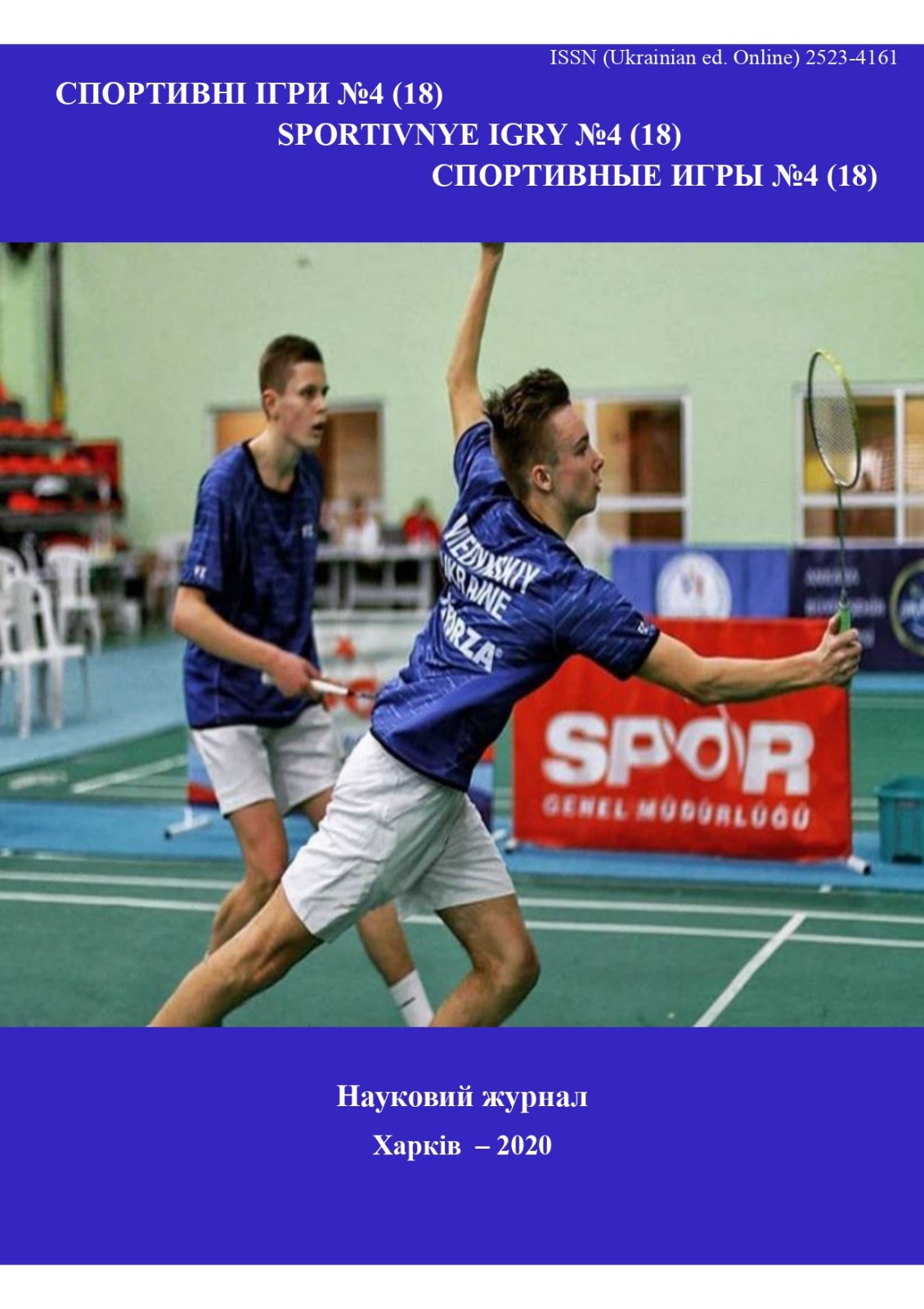Influence of physical culture and health-improving classes with elements of korfball on physical fitness of children of senior age preschool
DOI:
https://doi.org/10.15391/si.2020-4.06Keywords:
physical preparation, korfball, senior preschool ageAbstract
The aim of the research is to determine the influence of physical culture and health-improving classes with elements of korfball on the indicators of physical fitness of senior preschool children. The research was carried out in the UDO №51 in Lvov. The experiment involved 60 children (25 girls and 35 boys). The experimental group (EG) included 12 girls and 18 boys, the control group (CG) - 13 girls and 17 boys. In the CG the process of physical education was built on the basis of generally accepted guidelines and the content of the program "I am in the world" with the use of elements of sports games. In the EG, the content of the process of physical education was supplemented with the developed program material using korfball
means. Research methods: analysis, generalization and systematization of scientific and methodical literature data; educational formative experiment, observation, testing, methods of mathematical statistics. We determined the level of manifestation of the main motor qualities by a battery of tests: strength (dynamometry of the hands "Strongman"), explosive strength (throwing distance of the medicine ball "Zdorovyachok", the height of the jump up from the seat "Squirrel and Nut"), speed-strength (squats for 10 with "Vanka-vstanka"), flexibility (tilting the body forward from the sitting position "Kitten"), agility (throwing a tennis ball at the horizontal target "Hunter", maintaining balance while standing on the toes "Parrot", coordination of movements -
clapping hands over head and underfoot "Catch a gnat", the ability to assess the spatio-temporal parameters of movement - tossing and catching the ball "Hot potato", hitting the ball off the floor "Hammer in a nail"), speed (frequency of movements in running in place for 10 seconds "Centipede ", A temporary motor reaction in catching the" Catch a fish "line, the speed of local movement in throwing a plastic tennis ball" Fast hand "), power endurance (keeping the raised legs in the supine position" Bridge "), skilful motor skills (folding buttons into a box for 10 seconds "Tailor"). The results of the pedagogical experiment testify to a significant increase (p <0.01) of the results of physical fitness of children in the experimental and control groups.
However, in children from the EG, the increase in the analyzed indicators had a more pronounced tendency to growth, from sixteen indicators to eleven children achieved significantly higher results (p <0.05) compared to children with the CG, in particular in the development of strength, dexterity, explosive strength, fine motor skills and speed.
References
Бальсевич, В.К. (2000). Онтокинезиология человека. М.: Академия.
Богініч, О.Л. & Бабачук, Ю.М. (2014). Рухливі ігри та ігрові вправи з елементами спортивних ігор для дітей старшого дошкільного віку. Тернопіль : Мандрівець.
Пангелова, Н.Є. (2013). Формування гармонійно розвиненої особистості дітей дошкільного віку в процесі фізичного виховання : монографія. Переяслав-Хмельницький : ФОП Лукашевич.
Пасічник, В. (2020). Сутність ігрової діяльності у формуванні особистості дітей дошкільного віку. Спортивні ігри, 3(17) , 43-57. doi: 10.15391/si.2020-3.05
Пасічник, В.М. & Пасічник В.Р. (2016). Можливості використання елементів спортивних ігор з м'ячем для розвитку фізичних якостей дітей старшого дошкільного віку. Теоретико-методичні засади спортивних та рекреаційних ігор : зб. наук. ст. Львів,101-105.
Пасічник, В.М., Романчук, І.В. & Згоба, В.Л. (2020). Результати оцінки психофізичного стану дітей дошкільного віку. Український журнал медицини, біології та спорту. Том 5, 2 (24), 243-250. doi: 10.26693/jmbs05.02.243
Пасічник, В.М., Пітин, М.П. & Згоба, В.Л. (2016). Сучасні ігрові технології з елементами видів спорту у фізичному вихованні дітей дошкільного віку. Науковий часопис національного педагогічного університету імені М. П. Драгоманова. Серія № 15 Науково-педагогічні проблеми фізичної культури (фізична культура і спорт). Вип. 10, (80) 16, 88-93.
Приступа, Є.Н., Петришин, Ю.В., Виноградський, Б.А., Петрина, Р.Л. & Пасічник, В.М.(2014). Дидактичні ігри з м’ячами. Львів: ЛДУФК. ISBN 978-966-2328-61-5.
Piech, K. & Mularczyk (1997). Korfball. Warszawa.
Engle, P.L., Black, M.M. & Behrman, J.R. (2007). Strategies to avoid the loss of developmental potential in more than 200 million children in the developing world. Lancet, 369, 229-242.
Wilczkowski, E. (2012). Wychowanie firyczne dzieci w wieku przedszkolnym. Piotrkow Trybunalski.













